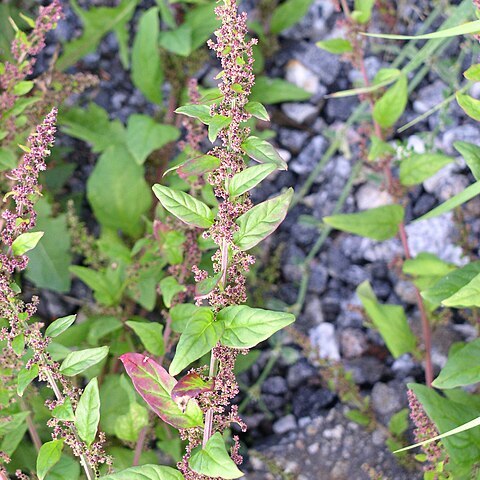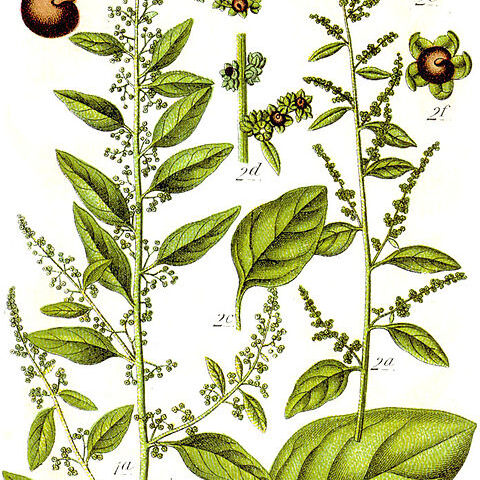Annual, erect or ascending, quite glabrous, glandless, without a distinct smell, without powdery vesicles, 4-100 cm (mostly 15-75 cm) long, dull green, rarely shining, in a living state often more or less strongly tinged with purple, frequently much branched (often from quite near the base); branches obliquely erect or the lower widely patent-ascending, not rarely partly prostrate; stem and branches angular. Leaves herbaceous, rarely fleshy, entire or the larger ones sometimes with one or a few triangular teeth near the base; lower leaves on rather long petioles, ovate of ovate-oblong from a cuneate or obtuse, rarely hastate base, shortly contracted into the petiole, acute or obtuse, rarely subretuse, frequently very shortly mucronate, 4-11 by 1½-6cm; highest leaves much smaller, oblong-lanceolate. Cymes very numerous, most variable as to size, dense or rather loose, few-to many-flowered; highest very often collected in a narrow, paniculate inflorescence (reminding of Amaranthus gracilis). Flowers sessile; tepals oval-obovate or oval-oblong, obtuse, thin, with a very distinct, not-keeled midrib, 1 ⅓-1½ by ⅓-½ mm, after anthesis widely patent, not concealing fruit; stamens 5, on the base of the perianth, ± equalling tepals; stigmas 2, erect or suber-ect, minute, persistent. Fruit depressed-globose, ± 1⅓ mm diam., very thin-walled. Seed blackish brown, feebly shining, very faintly striolate.
More
Erect or ascending annual to 1 m; stems 4-angled, lvs green, ovate to elliptic, 2–7 dm, obtuse or subacute, entire or with an obscure tooth at the widest part, rounded or cuneate to a short petiole; infls axillary, loose, cymosely much branched, many-fld, shorter than or equaling the lvs; cal smooth, its 5 apiculate segments rounded on the back; seeds horizontal, shiny-black, 1 mm wide; 2n=18. Native of Eurasia, occasionally found as a weed in our range
A herb. It grows each year from seeds. It can be upright or lie along the ground. The stems are square and often red. The leaves are oval. The flowers are yellow.


